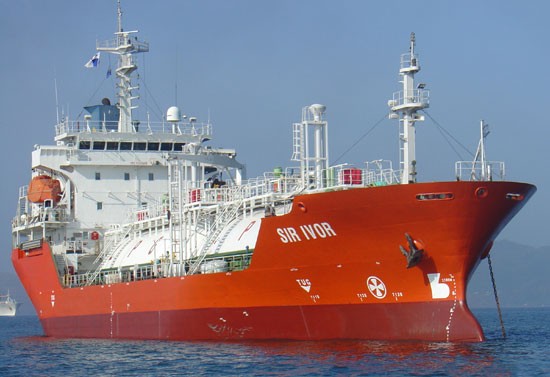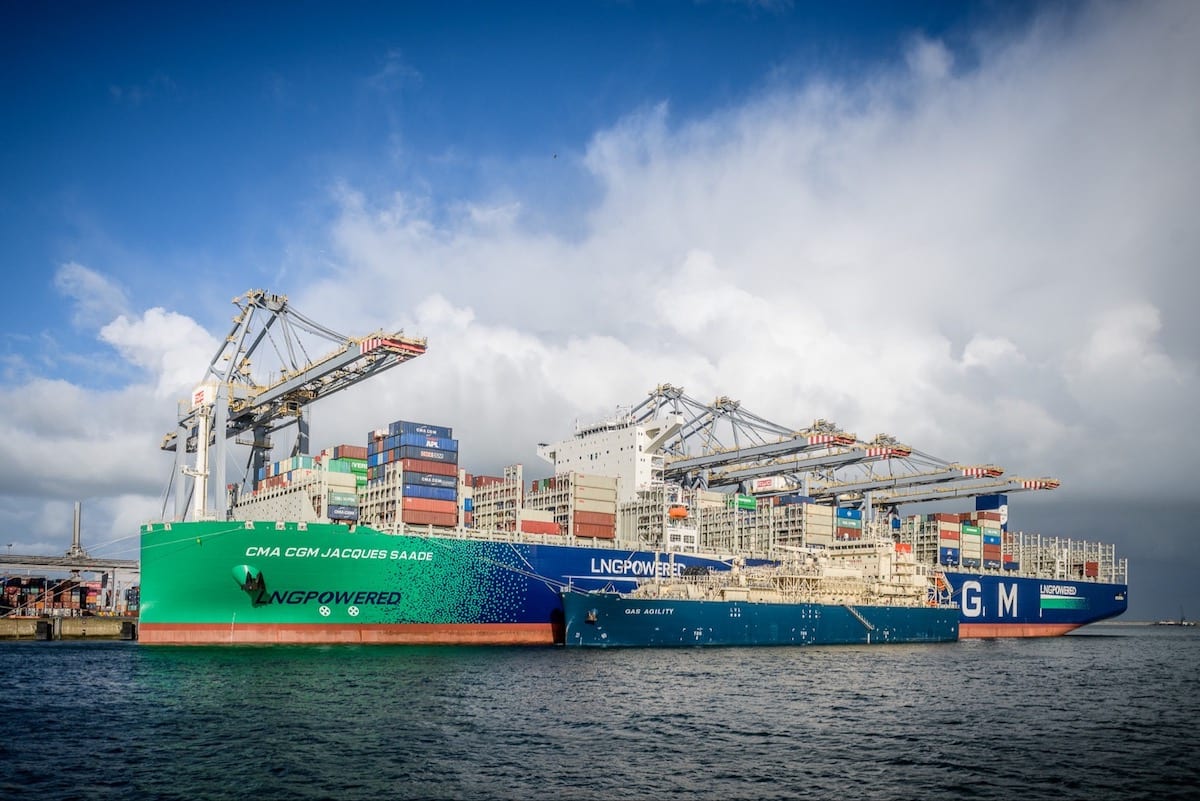Sir Ivor, a Stealth Gas-owned 5,000 cbm LPG carrier. Image: Stealth Gas
Jan. 24 (Bloomberg) — Add another profession to the beneficiaries of the U.S. oil boom: traders of long-neglected drilling byproducts such as propane and butane.
Traders typically earning less than $400,000 a year will start making as much or more than the average $750,000 earned by traders in larger, more established oil markets, according to Webber Chase Ltd. There are only about 200 specialists globally, the recruiter estimates, while companies including Vitol SA, Trafigura Beheer BV, BP Plc, Glencore Xstrata Plc and Mercuria Energy Trading SA are expanding their operations to take advantage of surging U.S. supplies.
The U.S. is the closest to energy independence in 28 years as domestic output expands by the most ever, making the country the world’s largest producer of oil and gas combined in 2013, according to Energy Department projections. Natural gas liquids, including liquefied petroleum gases, are a byproduct of drilling and were historically considered relatively insignificant, according to Trafigura. Now, opportunities to profit from U.S. supplies are making NGLs and LPGs valuable commodities.
“LPG is one of the few remaining oil product markets that isn’t already overcrowded and that makes it an attractive proposition for many trading houses,” said Douglas Ferguson, a managing director at Webber Chase in Singapore. “We have seen a surge in demand for LPG traders in the last 12 months and expect this to continue in 2014.”
$20 Billion
NGLs are energy-rich compounds similar to crude oil and natural gas that are used for heating, cooking and chemical manufacturing. They include LPGs such as propane and butane as well as pentanes, naphtha, natural gasoline and condensate. U.S. output will rise 2.8 percent to a record 2.6 million barrels a day this year, the Energy Department estimates.
With domestic consumption growth limited by chemical plant capacity, the energy industry will need to spend $20 billion by 2023 on facilities to process and export the fuels, Macgill James, manager of NGL market origination at Phillips 66, said at a Dec. 12 conference in New York hosted by Evercore Partners Inc. Asia is the biggest demand source. Traders can make about $5 million profit on each U.S. propane cargo shipped overseas, he said.
Price Gap
“It used to be, when a new trader showed up, you’d say, ‘What did you do wrong to get stuck on NGLs?’” James, who has worked in the industry since 1998, said at the conference. “Now people come to us saying, ‘How do we get into the NGL business?’”
Propane at the hub in Mont Belvieu, Texas, averaged $522 a metric ton in 2013, the lowest since 2009, according to data compiled by Bloomberg. The price was $794.53 yesterday. That compares with Saudi Arabia’s monthly propane contract, the benchmark for sales to Asia, which averaged $843 a ton in 2013 and cost $956.558 on Jan. 23, New York Mercantile Exchange data show.
Companies such as pipeline operators, gas producers and energy traders, as well as software vendors and consulting firms that serve them, are seeking professionals with NGLs experience more than ever before, according to Shelley Wright, a partner at Optimus, a Houston-based commodities recruiter. There are few specialists because companies traditionally lumped LPGs with other commodities such as gasoline, Ferguson said.
Largest Trader
BP added two traders and two business development professionals last year and may hire more, said Jay Gulley, chief operating officer for the global NGL business. The London- based energy giant is pursuing additional capacity on pipelines, processing plants, export terminals and ships, he said by phone Jan. 13.
Vitol, the world’s largest LPG trader, started its U.S. desk three years ago and expanded in the past year. The Geneva- based company has a global team of about 30 people, operates about 25 LPG vessels and shipped 9.3 million tons in 2012.
“The U.S. shale boom has resulted in an abundance of LPG,” said Anthony Baranello, an LPG broker at Vitol. “It is attractive as fuel for a number of reasons: it is clean, relatively easy to transport and competitively priced compared with crude.”
That’s creating new customers and uses for the fuels. In July, Vitol struck an agreement to supply propane to the U.S. Virgin Islands Water & Power Authority for five years and finance the $91 million cost of switching the power plants to burn propane instead of fuel oil.
Shale Revolution
The switch will cut costs by 30 percent, saving about $90 million annually, and reduce greenhouse gas emissions by about 20 percent, said Hugo Hodge Jr., WAPA’s chief executive officer. The conversion, planned to finish by the end of the year, is the first of its kind in the Americas, and power authorities in the Caribbean and Africa are studying the project as they consider similar moves, he said.
“The shale revolution took place right in front of us,” Hodge said by phone Jan. 10.
A net importer of LPGs until 2010, the U.S. exported a record 427,000 barrels a day in October, more than twice as much as a year earlier, the latest Energy Department data show. Total NGL exports surged 105 percent to 678,000 barrels a day, according to the department’s figures.
The profit from trading one 46,000-ton propane cargo from Houston to Europe is about 20 cents a gallon, or $5 million, based on market prices and the freight and terminals costs, Phillips 66’s James said in the Dec. 12 presentation. For butane, the profit is 61 cents a gallon, or $15 million. Shipping a cargo to Asia makes about 21 cents a gallon, or $5 million, for propane and 77 cents a gallon, or $17 million, for butane, according to the presentation.
Bank Regulations
Glencore and Mercuria are also hiring traders, Ferguson said. Glencore spokesman Charles Watenphul declined to comment. Benoit Lioud, Mercuria’s spokesman in Geneva, confirmed the company is building an NGL business and declined to provide any further details.
Banks aren’t entering the fray because of higher capital requirements and stricter rules on trading physical commodities since the global financial crisis, according to Christopher Melillo, a managing partner at Kaye/Bassman International Corp., a Dallas-based recruiter. Commodity trading revenue at the 10 largest global investment banks fell 18 percent in the first nine months of 2013 to $4 billion, industry analytics firm Coalition Ltd. said in a December report.
‘Frontline Commodity’
U.S. LPG supply will reach 2.7 million barrels a day by 2020 while domestic demand hovers at 1.5 million barrels a day, leaving a surplus of 1.2 million barrels a day available to export, Enterprise Products Partners LP estimates. The Houston- based company plans to roughly double its LPG export capacity to as much as 16 million barrels a day by the end of next year. Total U.S. export capacity will reach 34.3 million tons in 2017, from about 7.5 million last year, according to DNB Markets, the investment-banking unit of Norway’s largest lender.
The increased scale is important for LPG traders to be able to profit, Trafigura said in its annual report. Its LPG desk grew “extensively” last year as the company shipped more cargoes and operated in more countries, it said. Previously considered “relatively insignificant,” LPGs are becoming a “frontline commodity,” Trafigura said in the report.
“It used to be the odd cargo that you might trade from time to time. Now the flows are more consistent and more regular” said Olivier Jakob, managing director of Petromatrix GmbH, a research company in Zug, Switzerland. “The U.S. is looking for new export outlets. That is where you have the perfect fit with the global trader.”
– Isaac Arnsdorf and Andy Hoffman, Copyright 2014 Bloomberg.
Unlock Exclusive Insights Today!
Join the gCaptain Club for curated content, insider opinions, and vibrant community discussions.

 Join The Club
Join The Club













